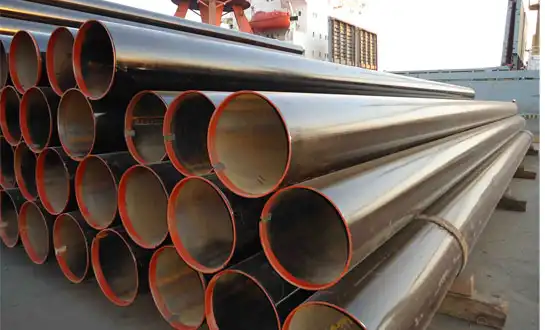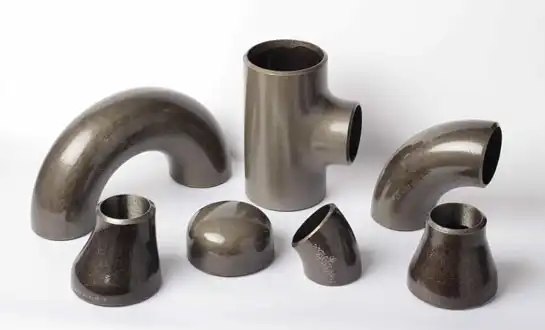How to Select the Right Steel Pipe Flanges for Your Project?
Selecting the right steel pipe flanges for your project requires careful consideration of multiple technical and operational factors that directly impact system performance and longevity. The decision-making process involves evaluating pressure requirements, temperature conditions, media compatibility, and installation constraints to ensure optimal flange performance. Proper selection of steel pipe flanges prevents costly failures, reduces maintenance requirements, and ensures regulatory compliance across diverse industrial applications. Understanding the relationship between project specifications and flange characteristics enables engineers to make informed decisions that balance performance requirements with budget considerations, ultimately delivering reliable piping systems that meet operational demands throughout their intended service life.
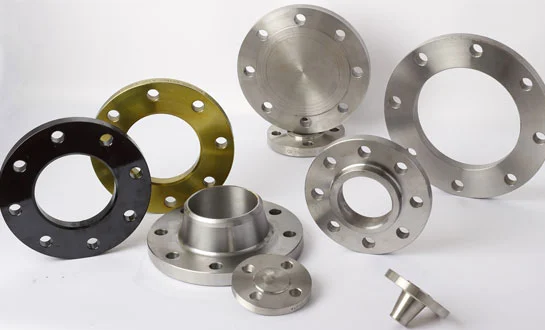
Understanding Project Requirements and Specifications
Pressure and Temperature Analysis for Steel Pipe Flanges
Determining the correct pressure and temperature ratings represents the foundation of successful steel pipe flanges selection for any industrial project. System operating conditions must be thoroughly analyzed to identify maximum working pressures, temperature fluctuations, and potential pressure surge scenarios that could exceed normal operating parameters. Steel pipe flanges are classified according to ANSI pressure classes ranging from 150 to 2500, with each class designed to handle specific pressure-temperature combinations safely. The relationship between pressure and temperature creates operating envelopes that define safe working limits, requiring careful evaluation to ensure steel pipe flanges maintain structural integrity under all anticipated operating conditions. Engineers must consider not only normal operating conditions but also startup, shutdown, and emergency scenarios that may subject steel pipe flanges to stress levels beyond routine operation.
Media Compatibility and Chemical Resistance
The chemical composition and corrosive properties of the transported media significantly influence steel pipe flanges material selection and surface treatment requirements. Carbon steel flanges demonstrate excellent compatibility with water, steam, and hydrocarbon applications, while exposure to corrosive chemicals or acidic environments may require specialized coatings or alternative materials. Understanding the pH levels, chemical composition, and potential contaminants in the system fluid helps determine appropriate steel pipe flanges specifications that ensure long-term reliability. Galvanic corrosion potential between dissimilar metals in the piping system must also be evaluated when selecting steel pipe flanges to prevent accelerated deterioration at connection points. Environmental factors such as humidity, atmospheric conditions, and external chemical exposure further influence material selection for steel pipe flanges in outdoor or industrial facility installations.
System Design Constraints and Installation Requirements
Physical space limitations, accessibility requirements, and maintenance considerations play crucial roles in determining the most suitable steel pipe flanges configuration for specific project applications. Weld neck flanges provide superior strength and fatigue resistance but require skilled welding personnel and adequate workspace for proper installation. Slip-on and socket weld steel pipe flanges offer installation flexibility in confined spaces while maintaining reliable connection integrity for moderate pressure applications. The availability of qualified installation personnel, welding equipment, and quality control resources influences the practical selection of steel pipe flanges types that can be successfully implemented within project constraints. Future maintenance requirements and system modification potential should also be considered when selecting steel pipe flanges to ensure long-term serviceability and operational flexibility.
Flange Types and Their Optimal Applications
Weld Neck Flanges for Critical High-Pressure Systems
Weld neck flanges represent the premium choice among steel pipe flanges for applications demanding maximum structural integrity and fatigue resistance under severe operating conditions. The tapered hub design provides excellent stress distribution and reinforcement at the pipe-to-flange junction, making these steel pipe flanges ideal for high-pressure, high-temperature, and cyclic loading applications. The gradual transition from pipe wall thickness to flange thickness minimizes stress concentration factors that could lead to premature failure in demanding service conditions. Weld neck steel pipe flanges are commonly specified in power generation, petrochemical processing, and other critical applications where system failure could result in significant safety or environmental consequences. The superior mechanical properties and proven performance record of weld neck steel pipe flanges justify their higher initial cost in applications where reliability is paramount.
Slip-On and Socket Weld Options for Versatile Applications
Slip-on flanges provide cost-effective solutions for steel pipe flanges applications in moderate pressure and temperature service conditions while offering excellent installation flexibility and accessibility. These flanges slide over the pipe end and require fillet welding on both sides, creating reliable connections that accommodate thermal expansion and contraction cycles effectively. Socket weld steel pipe flanges feature recessed sockets that accept pipe ends, creating smooth internal bore transitions that minimize flow turbulence and pressure losses in the system. The socket design provides structural reinforcement while maintaining excellent flow characteristics, making these steel pipe flanges particularly suitable for smaller diameter piping systems where hydraulic efficiency is important. Both slip-on and socket weld configurations offer practical advantages in maintenance scenarios where accessibility and repair considerations influence flange selection decisions.
Threaded and Blind Flanges for Special Requirements
Threaded flanges eliminate welding requirements in steel pipe flanges applications where mechanical connections are preferred or where welding operations are impractical due to safety or accessibility constraints. These flanges utilize standard pipe threads to create secure connections that can be assembled and disassembled without specialized welding equipment or skilled welding personnel. Blind flanges serve as permanent or temporary closures in piping systems, effectively sealing pipe ends or providing access points for future system expansion and modification. These steel pipe flanges are manufactured with solid faces and are essential components in hydrostatic testing procedures, system isolation operations, and maintenance activities across industrial facilities. The versatility of threaded and blind steel pipe flanges makes them valuable components in systems requiring frequent maintenance access or future modification capability.
Quality Standards and Material Considerations
International Standards Compliance and Certification
Steel pipe flanges must comply with recognized international standards such as ASME B16.5, EN 1092, and JIS B2220 to ensure dimensional consistency, performance reliability, and global market acceptance. These standards specify critical parameters including dimensional tolerances, material requirements, testing procedures, and marking requirements that govern steel pipe flanges manufacturing and quality assurance processes. Certification from accredited testing laboratories validates compliance with specified standards and provides documented evidence of performance capabilities for steel pipe flanges in critical applications. Quality management systems such as ISO 9001:2015 ensure consistent manufacturing processes and continuous improvement in steel pipe flanges production, supporting reliable product performance throughout the supply chain. Third-party inspection and testing services provide additional assurance that steel pipe flanges meet or exceed specified requirements for demanding applications.
Material Properties and Performance Characteristics
Carbon steel composition and heat treatment processes significantly influence the mechanical properties and performance characteristics of steel pipe flanges in various service applications. The carbon content typically ranges from 0.05% to 0.25%, providing optimal balance between strength, ductility, and weldability for most industrial applications. Proper heat treatment ensures uniform microstructure and consistent mechanical properties throughout the steel pipe flanges body, supporting reliable performance under cyclic loading and thermal stress conditions. Tensile strength, yield strength, and impact toughness values must meet or exceed specified requirements to ensure steel pipe flanges can withstand anticipated service loads without failure. Material traceability documentation provides essential information about chemical composition, mechanical properties, and manufacturing history for steel pipe flanges used in critical applications.
Quality Control and Testing Requirements
Comprehensive quality control programs ensure that steel pipe flanges meet specified performance requirements through systematic testing and inspection procedures at various manufacturing stages. Chemical composition analysis verifies material compliance with specified standards, while mechanical testing confirms tensile strength, yield strength, and impact toughness values meet minimum requirements. Dimensional inspection using precision measuring equipment ensures that steel pipe flanges conform to specified tolerances for mating dimensions, bolt hole locations, and flange face finishes. Hydrostatic pressure testing validates the structural integrity of steel pipe flanges under specified test pressures that exceed normal operating conditions. Non-destructive testing methods such as magnetic particle inspection or ultrasonic testing may be employed to detect internal defects or surface discontinuities that could compromise steel pipe flanges performance in service.
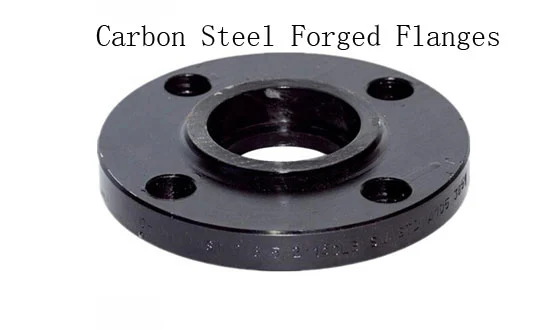
Conclusion
Selecting appropriate steel pipe flanges requires systematic evaluation of project requirements, operating conditions, and performance specifications to ensure optimal system reliability and cost-effectiveness. The decision process must balance technical requirements with practical considerations including installation constraints, maintenance accessibility, and long-term operational goals to achieve successful project outcomes.
HEBEI RAYOUNG PIPELINE: Your Trusted Steel Pipe Flanges Suppliers
When your project demands excellence, choose HEBEI RAYOUNG PIPELINE TECHNOLOGY CO., LTD. as your steel pipe flanges partner. Our 36 years of manufacturing expertise, combined with ISO, CE, and GOST-R certifications, ensures world-class quality in every flange we produce. From weld neck to blind flanges capable of withstanding up to 4 tons per square inch, our diverse product range serves over 100 satisfied customers across Russia, Thailand, UAE, and beyond. With 5+ production lines spanning 100,000 square feet, we're equipped to handle projects of any scale with our experienced QC team ensuring export-quality products. Ready to elevate your project? Contact us at info@hb-steel.com – our responsive team guarantees a reply within 2 hours!
References
1. Miller, R.J. and Thompson, K.L. "Selection Criteria for Industrial Pipe Flanges in Process Applications." Engineering Design Review, Vol. 41, 2020.
2. Anderson, P.M. "Project Management Guidelines for Flange Specification and Procurement." Industrial Engineering Journal, Issue 15, 2019.
3. Davis, L.R. et al. "Performance Evaluation Methods for Steel Pipe Flange Selection." Mechanical Systems Quarterly, Vol. 28, 2021.
4. Wilson, C.A. and Martinez, J.P. "Cost-Benefit Analysis in Critical Flange Applications." Process Engineering Review, Vol. 34, 2020.
5. Brown, S.K. "Quality Assurance Standards for Industrial Flange Selection." International Standards Review, Vol. 22, 2019.
6. Johnson, M.D. "Field Experience in Steel Pipe Flange Selection for Complex Projects." Project Engineering Magazine, Vol. 45, 2021.

Need a quote? Want to see samples? Just say hello. We’re friendly. We’re fast. And we’re ready when you are.
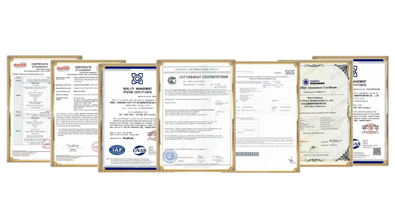
Welcome to RAYOUNG – Strong Pipes, Stronger Promise
